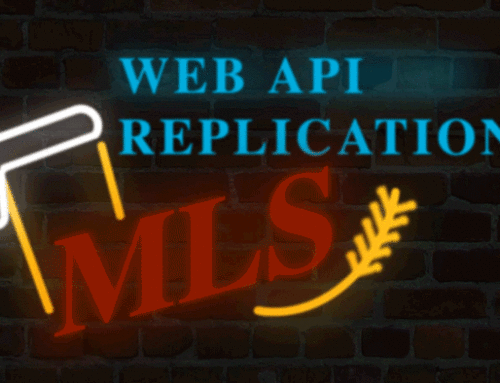It was a great week at NAR Midyear to re-connect with fellow colleagues, have sonorous discussions about the industry, and – of course – chitchat about the current controversial brew-ha-ha that seems to occur around these types of events.
 Over the last month – especially last week – I had the pleasure of talking to many real estate technology companies who provide products and services to brokers and agents. When the discussion would lead to back office architecture, the discussion was segmented into two groups.
Over the last month – especially last week – I had the pleasure of talking to many real estate technology companies who provide products and services to brokers and agents. When the discussion would lead to back office architecture, the discussion was segmented into two groups.
Companies who have been in real estate for some time and new companies who are just starting their foray into the real estate industry.
Being new in the real estate consulting world, I was surprised on how dissimilar my conversation about RESO was with these two groups. A division which was exposed by asking one question.
“Is your back office RESO Data Dictionary compliant?”
New companies in the industry were eager to learn more about RESO or already adopted the standard in their back office. Common questions during these discussions included, what is the value proposition to my customers and me, how can I participate, and what is the future of the standard?
These companies see the data points of adoption to innovate by leveraging the RESO Data Dictionary and Web API in their business. Having a data standard enables them to effectively and efficiently deliver a quality and consistent service to their customers.
Art Carter solidifies these data points on areas of adoption and support of the standard in his article titled, “Raising the Data Standards Bar: Why Moving the Industry Forward Matters!” If you have not read this, please do.
The vast majority of companies who have been around for some time and have built their back office data structures on the backs of over 600 MLSs “No” and then began to defend why the answer was no.
One company said the RESO Data Dictionary did not have enough fields to meet their customer’s needs. They were exceptionally surprised when I said there are 639 property fields out of the 1247 total fields and 2109 lookups/enumerations in the current RESO Data Dictionary 1.6.
You can view all the fields in the RESO Data Dictionary 1.6 Wiki. Version 1.7 will increase the number of fields as RESO begins to extend the standard to include fields to collect business rules and change events of records in other fields.
Afterwards, my usual follow-up question was, “Okay, well, what is your roadmap to adopt the data standards?”
Are there missing data points in the mindset of these companies which prevents them from moving forward with the industry? I am sure there are business reasons, but recently there have been very compelling case studies of companies fully adopting the data standard.
Homes.com case study examines the benefit for moving to the data standard. They saw a 90% decrease in cost to aggregate data with the standard. A cost savings from a part of the financials which improves their bottom-line and increases gross margins.
My Florida Regional MLS removes non-standard data from their native MLS database. The article details the benefits on how the data standards will reap benefits for the MLSs broker and agent members.
As the MLSs move towards the future with data standards as mandated by NAR MLS Policy, technology companies must think about how they can migrate to the data standards as well.
Brokers can assist to motivate this transition with their technology partners. When reviewing new products and platforms from your technology partners, insist they must be RESO Data Dictionary compliant in their back-office.
If they are not and do not plan on being compliant, ask for exemption of any data mapping or translation fees to include your MLSs data feed into their product. Data mapping and translation is a costly and time-consuming task. A task which is significantly reduced if RESO Data Dictionary and Web API standards have been adopted.






There is no reason a vendor can’t handle both. We rebuilt our entire platform to be data dictionary compatible to rapidly add new MLSs and decrease problems with current ones. We still have the non data dictionary importer for those MLSs that have yet to adopt it.
We plan to go full WebAPI very soon too!
Eric, I cannot agree with you more. Thank you for your comments.